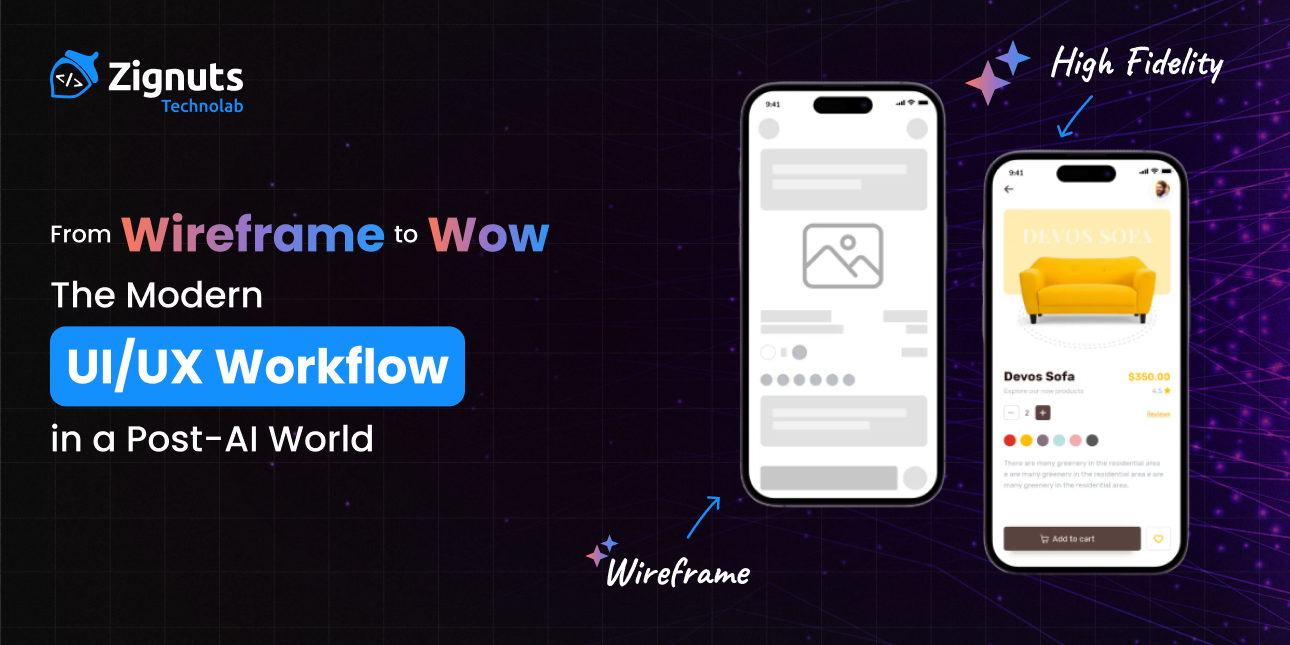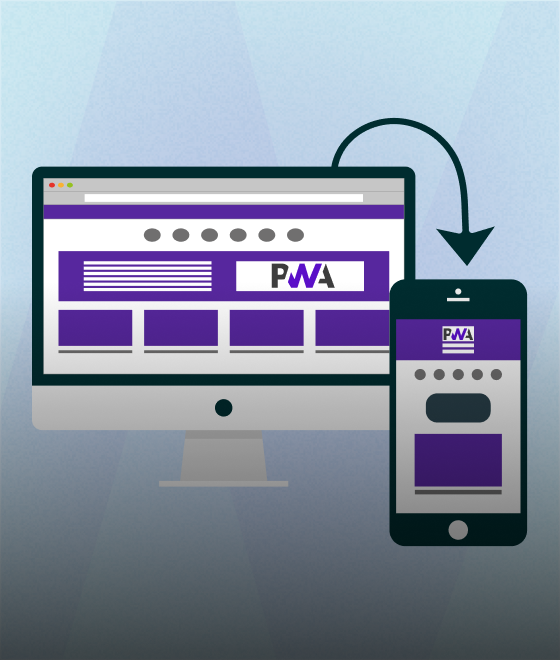In the not-so-distant past, crafting digital experiences was a labor of love: whiteboards full of scribbles, Post-it notes everywhere, hand-sketched wireframes, hours of stakeholder meetings, and pixel-by-pixel precision. But here we are-2025-where AI isn’t just assisting; it’s co-creating.
Welcome to the post-AI era of design. Where ideation is faster, iterations are smarter, and your biggest competitor isn’t another designer-it’s time itself.
In this blog, we’ll unravel the modern UI/UX workflow, how it’s evolving, where AI fits in, and why the journey from wireframe to “wow” now needs both a designer’s heart and a machine’s brain.
1. Ideation in the Post-AI Era: Intelligence Meets Intuition
Then: Brainstorming sessions with sticky notes, moodboards, and user personas drawn from interviews.
Now: Enter AI-powered discovery. Tools like ChatGPT, Uizard, and Figma AI assist in generating user flows, personas, and even rough interface ideas based on product briefs.
Pro Tip: Use AI as a springboard, not a crutch. Let it draft 80%-you refine the 20% with empathy, context, and strategy.
Still sacred: Human-led empathy interviews. No AI can replace a real conversation with your end user.
2. Wireframes: From Low-Fidelity to Logic-First
Wireframes were once rough sketches-boxes, buttons, grayscale dreams. But today, they’re dynamic blueprints.
Modern Workflow:
- Start with AI-assisted tools like Whimsical, Balsamiq, or Figma AI Wireframe Generator.
- Generate layout options based on UX goals and content.
- Layer in logic: conditional flows, data states, accessibility considerations.
Shift in Mindset: Wireframes are no longer just structural-they’re strategic.
3. UI Design: Where Aesthetics Marry Algorithms
This is where “Wow” begins.
AI tools like Galileo AI, Adobe Firefly, and Figma’s Smart Suggestions now auto-generate UI components, color palettes, and even design systems based on brand inputs.
But here’s the kicker: Without taste, AI’s just noise.
What You Still Do Best:
- Visual storytelling
- Brand alignment
- Emotional tone
- Cultural relevance
- Micro-interactions
“A good designer uses AI to speed up the what. A great designer controls the why.”
4. Prototyping and Interaction Design: Smart, Fast, Functional
Prototyping today is like magic.
- Tools like Framer, Protopie, and Figma’s Dev Mode allow instant transitions, interactive flows, and auto-documentation.
- AI now helps simulate user journeys and stress-test flows.
- You can even test with virtual personas or synthetic user testing platforms.
What’s still needed? You. Your intuition. Your ability to feel if a tap feels right, if a scroll has rhythm, if a transition delights.
5. Usability Testing: Real Feedback, Faster
Here’s where AI truly shines.
- Heatmaps? Auto-generated.
- User recordings? AI highlights drop-off points.
- A/B tests? Analyzed in seconds.
- Surveys? Summarized with sentiment analysis.
But don't forget: A/B tests can’t measure why someone felt lost, bored, or frustrated. AI detects patterns. You decode emotions.
6. Iteration: Speed with Soul
Iteration loops used to be painful. Now, they’re instant.
- Design systems auto-update across files.
- AI suggests UI improvements based on real-time feedback.
- Version control ensures you never lose your best work.
Best practice: Create a feedback–AI–refine loop. Involve stakeholders early, use AI for fast revisions, and keep refining based on both data and instinct.
7. Handoff to Dev: From Chaos to Cohesion
Gone are the days of “final.psd.zip”.
- Figma’s Dev Mode, Zeplin, and Anima now provide dev-ready code snippets, assets, and documentation.
- AI tools like Builder.io and Locofy.ai can even convert UI to React/Vue/Flutter code.
Still, developers need logic, not just layouts. Work closely with them to align on interaction rules, data flow, and component behavior.
The Balancing Act: Human Creativity vs AI Capability
The modern UI/UX workflow is not about replacing designers. It’s about amplifying them.
AI is fast, scalable, and data-driven.
You are emotional, curious, and intuitive.
Together? That’s where magic lives.
“Design used to be art + logic. Now it’s art + logic + machine intelligence.”
What’s Next?
- AI-Powered UX Research: Predict user behavior before testing.
- Generative Design Systems: Brand kits that evolve in real time.
- Neurodesign: Interfaces that adapt to emotion and focus.
We’re just scratching the surface.




.svg)

.svg)



.svg)

.svg)











.png)
.png)
.png)
.png)
.png)
.png)



